Nostalgia, it seems, is accelerating. The new-old hotness is now the 1990s, from pop-up headlights to angular lines giving way to organic curves. The genesis of modern turbo tuning is very much in demand, and with cars like this FC3S Mazda RX7 dripping in period-perfect RE Amemiya parts, the golden era is very much still buzzing
Words and photos: Richard Opie
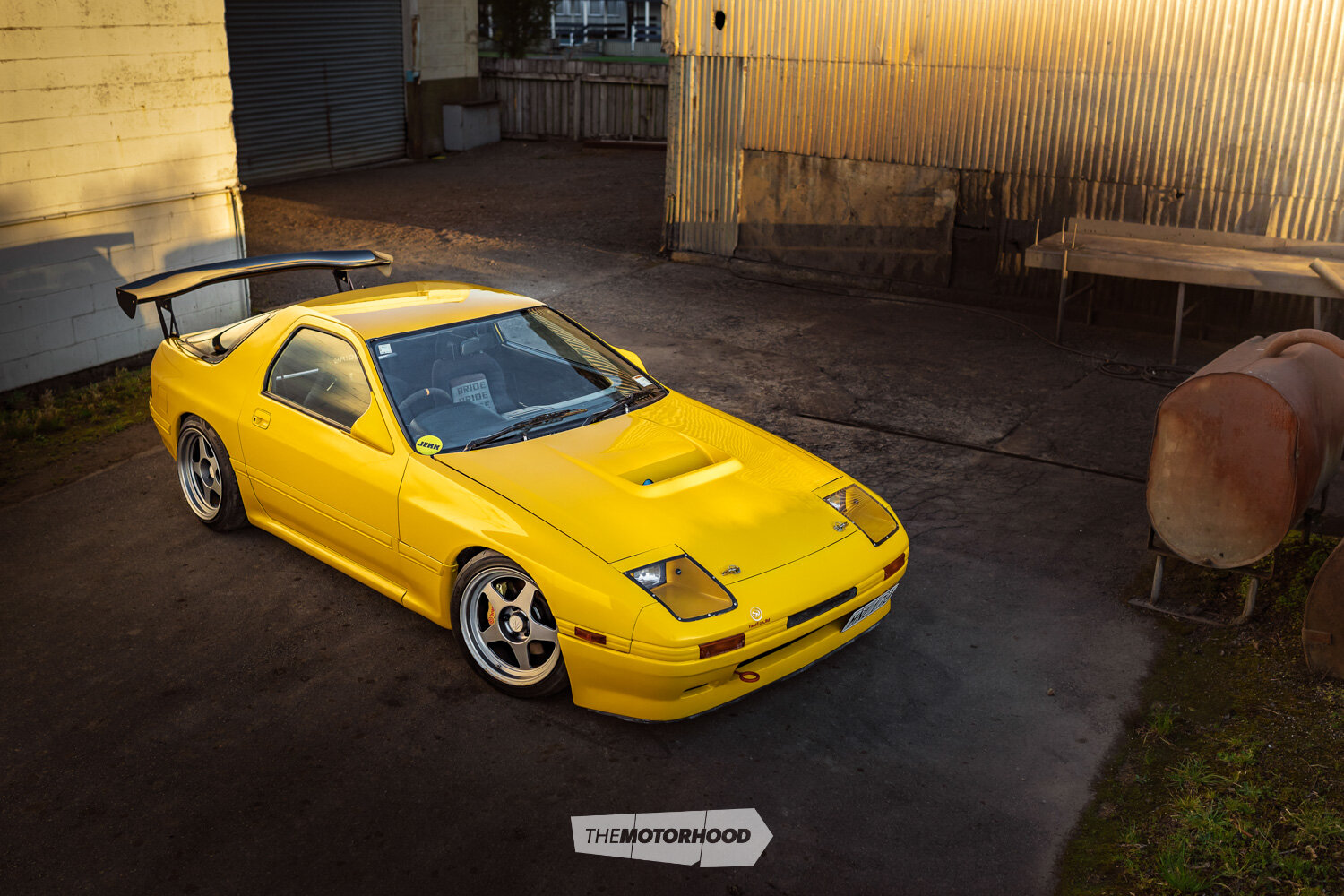
Mention the words ‘Japan’ and ‘golden era’ in the same breath, and a single glance around the room should be adequate to properly grasp the gravity of that utterance among a crowd of tuner-car faithful. The images conjured are evocative. A JZA70 Supra with the hammer down, the whistle of a T51R turbo escalating as it streaks along the Bayshore Route. The guttural growl of an R33 GT-R spooling up a pair of GT3540s before busting into the nine-second zone at Sendai Hi-Land. Top-tier D1GP grids packed with barking SR20s, throwing down multi-car trains in liveries as wild and colourful as the drivers personalities. They’re all tied together with names like Top Secret, Veilside, HKS, GReddy — tuning badges of honour that came to epitomise a generation.
It’s an era that skirts the fine line between analogue and digital, with engine tuning fairly rudimentary, and technology evolving at pace. As the sun set over the ’90s and the 2000s dawned, Japan’s car culture was experiencing an absolute boom. Tuning houses would battle for supremacy, be it in the Auto Salon show hall or the Tsukuba ribbon. It’s an era of such passion and creativity that, some two decades later, its status is sealed as a blueprint of what ‘should be’ by a cabal of enthusiasts across the globe — down here in Kiwiland, we’re no exception either.

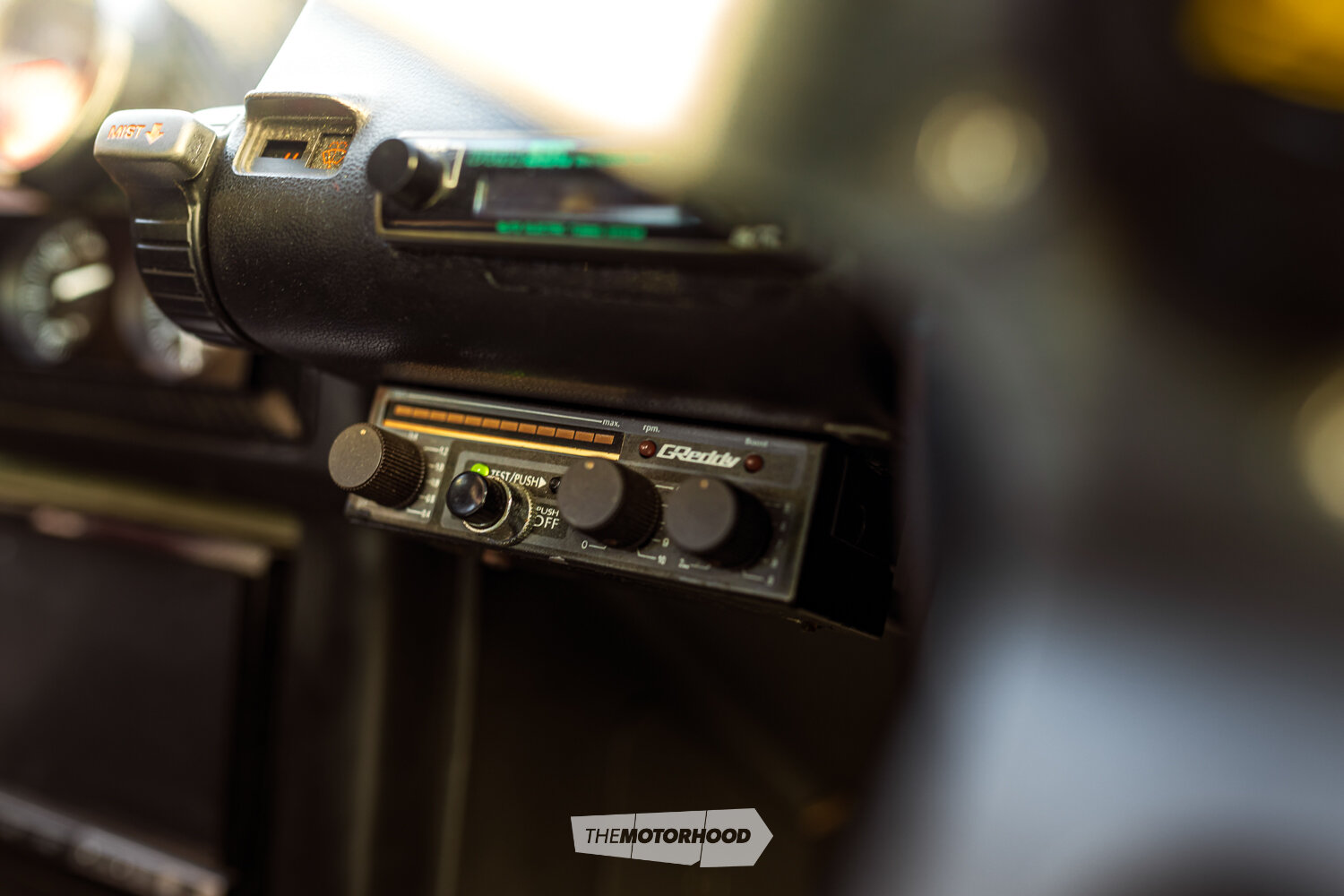
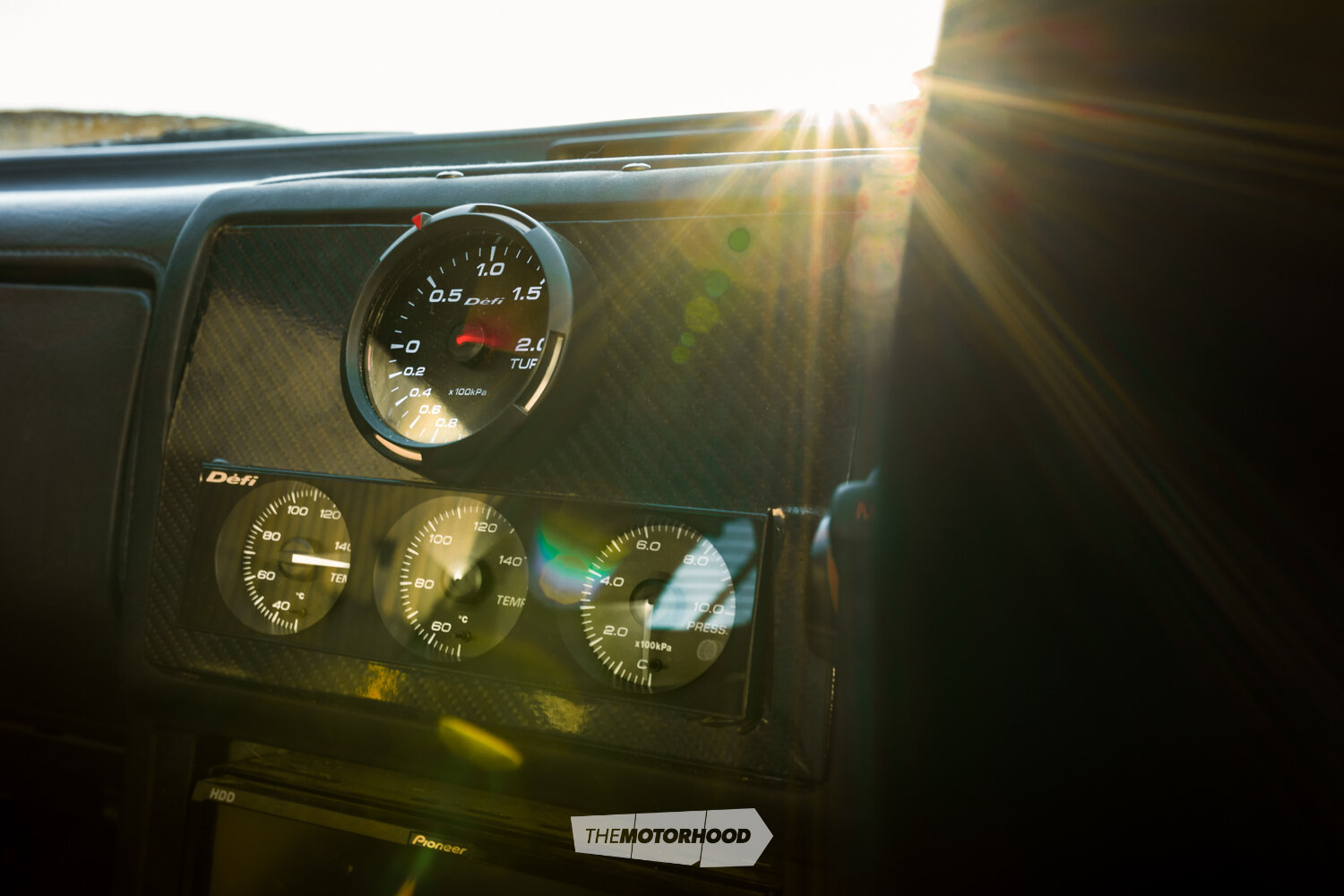
The searing yellow pearl of Tony Jelaca’s FC3S Mazda RX-7 serves as a vibrant reminder of an era past. It’s an original pressing hit from the ’90s — no half-assed remaster — serving up a damn near unfiltered golden-era experience. And it’s wearing a fresh set of Kiwi plates.
Tony’s car journey starts off with a little bit of peer pressure from a flatmate. Remember this bit, it’s prophetic. A set of lowering springs found their way into his CB Accord, after a bit of convincing him that it was a good idea. It’d transcend into Pick-a-Part raids for genuine and rare parts, ripe for the resell. This practice undoubtedly honed Tony’s appreciation for quality components, something that’d serve him well in the near future.
He’d also developed a penchant for the long-hood look of ’80s and ’90s Japanese sports cars, explaining “they’re just so unique, they just look so cool when you see them on the roads.” It’d evolve into ownership of a GA61 Celica XX (Celica Supra for those playing at home), with a 2JZ-GTE beneath its svelte bonnet. “I flew to Dunedin and drove that home,” Tony explains. “Throughout the ownership of that, I’ve learned that buying a car with the hard yards done doesn’t really hurt,” he says, before adding, “it can make things a lot cheaper!”
The Celica is a yarn for another day — one that’s still evolving and being fine-tuned — but it became apparent that it wasn’t really a track car, despite a couple of attempts. “It’s a great road car,” Tony reckons, “but I decided I wanted something I could thrash on the track all day and drive home.” The search turned to cheap and cheerful, small-capacity thrashers. AE111 and EG6 became search queries of interest, yet as it would turn out, the eventual acquisition was questionable in its ability to meet the brief.
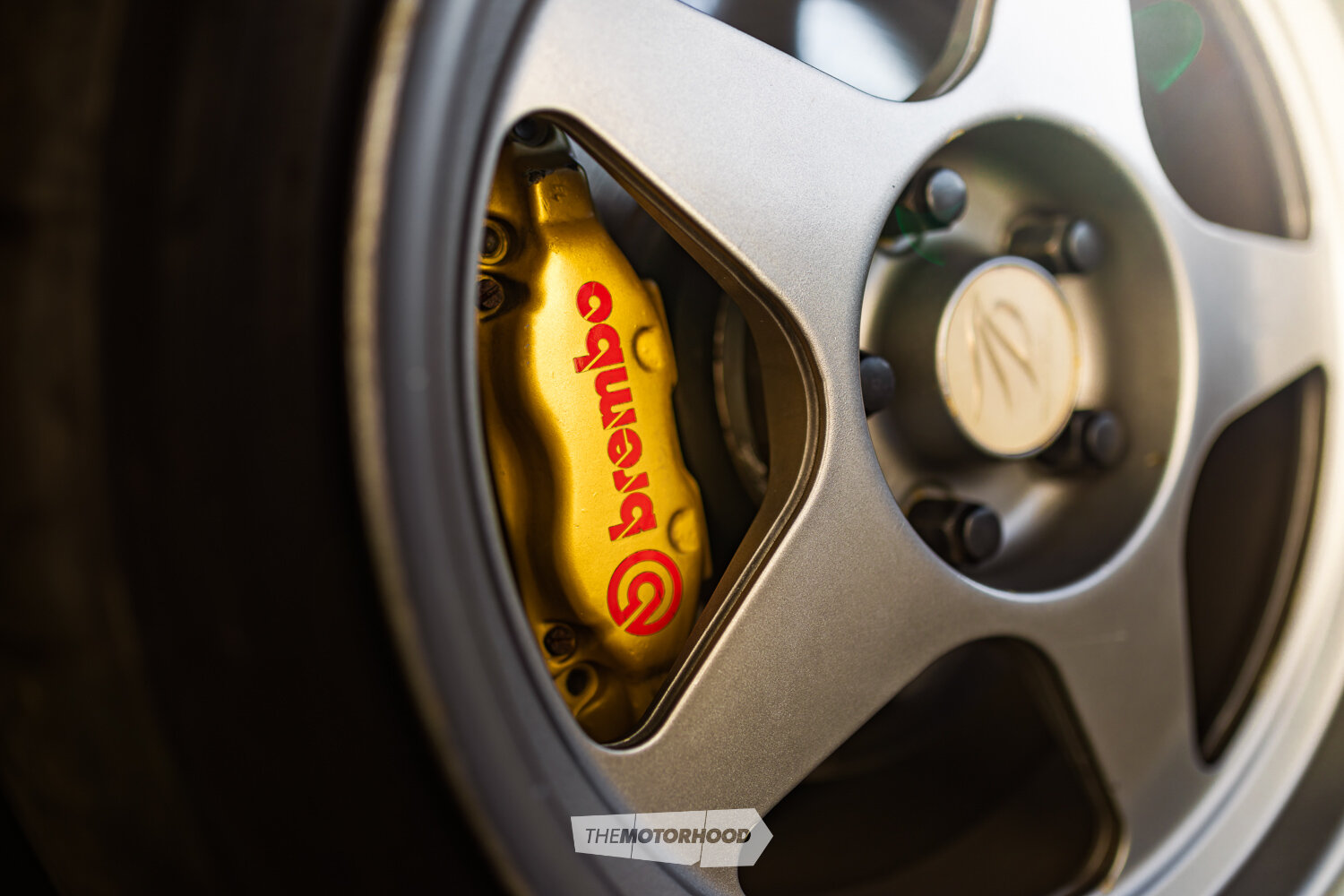
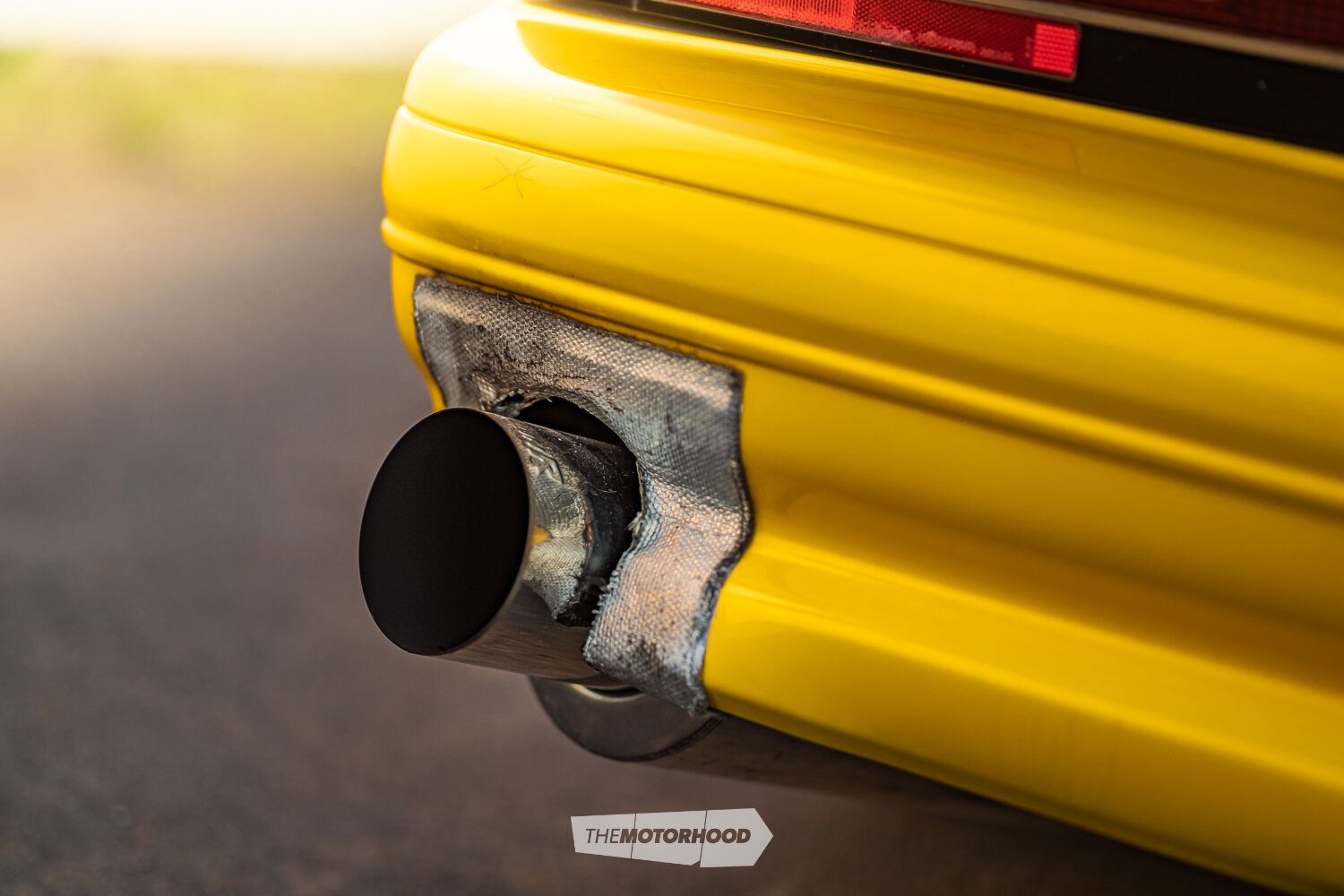
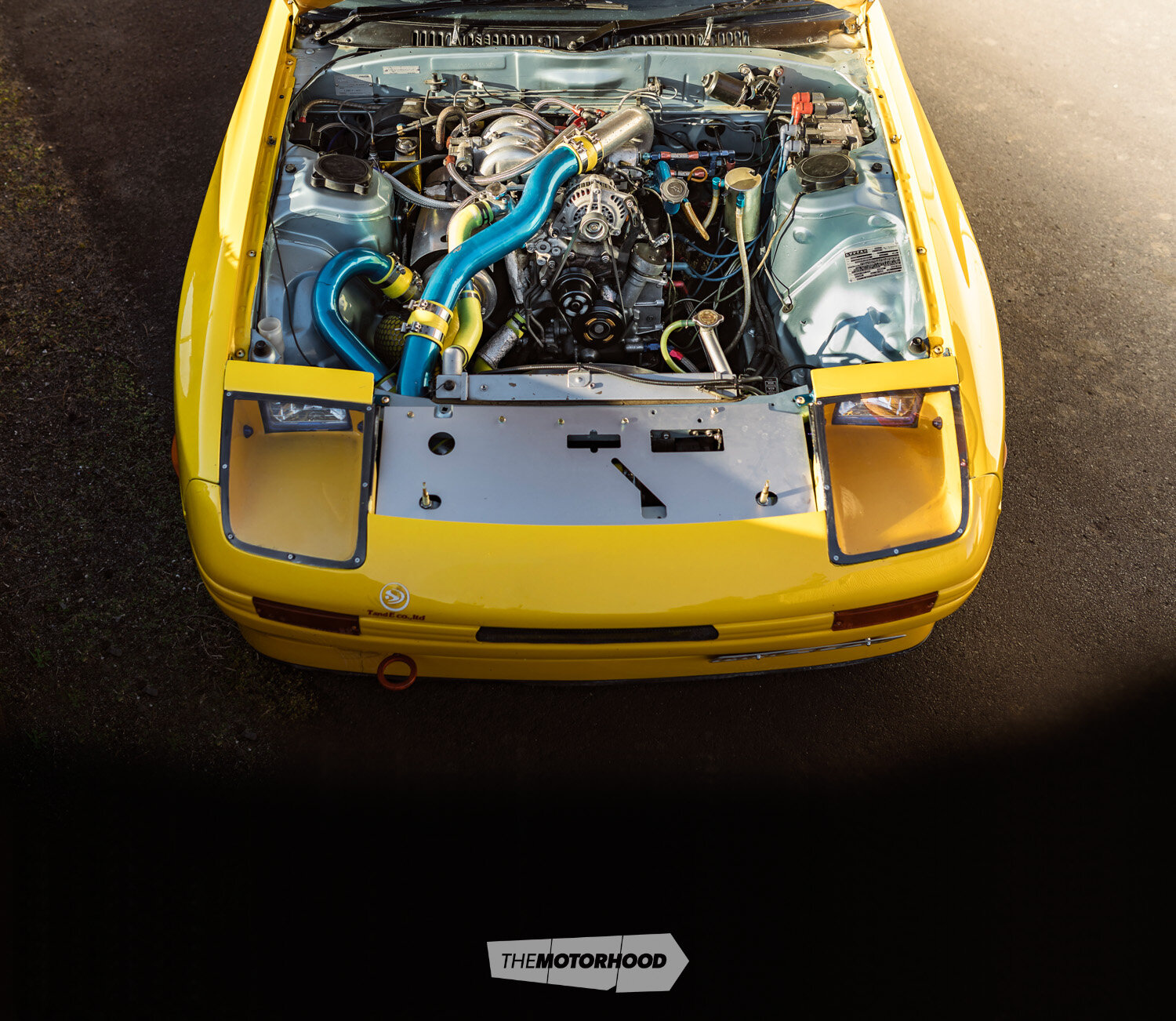
“A mate had listed his FC on marketplace, so out of curiosity, I looked on Trade Me to see what sort of money they were fetching,” Tony says of his first encounter with a proper golden-era gem.
Like the proverb says: ‘curiosity resulted in purchasing a rotary’, or something like that. The FC stood out among its Trade Me peers, sitting functionally low over a set of real-deal Desmond Regamaster wheels, coated in a vibrant pearl yellow, with a towering RE Amemiya wing and some other choice RE Amemiya exterior parts. It looked like something straight out of a late Friday night at Daikoku Futo, primed and ready for a blaze up the expressway.
“The looks blew me away, and I didn’t take much convincing,” says Tony. “All my mates were egging me on, and within a week I was up in Auckland with a trailer.”

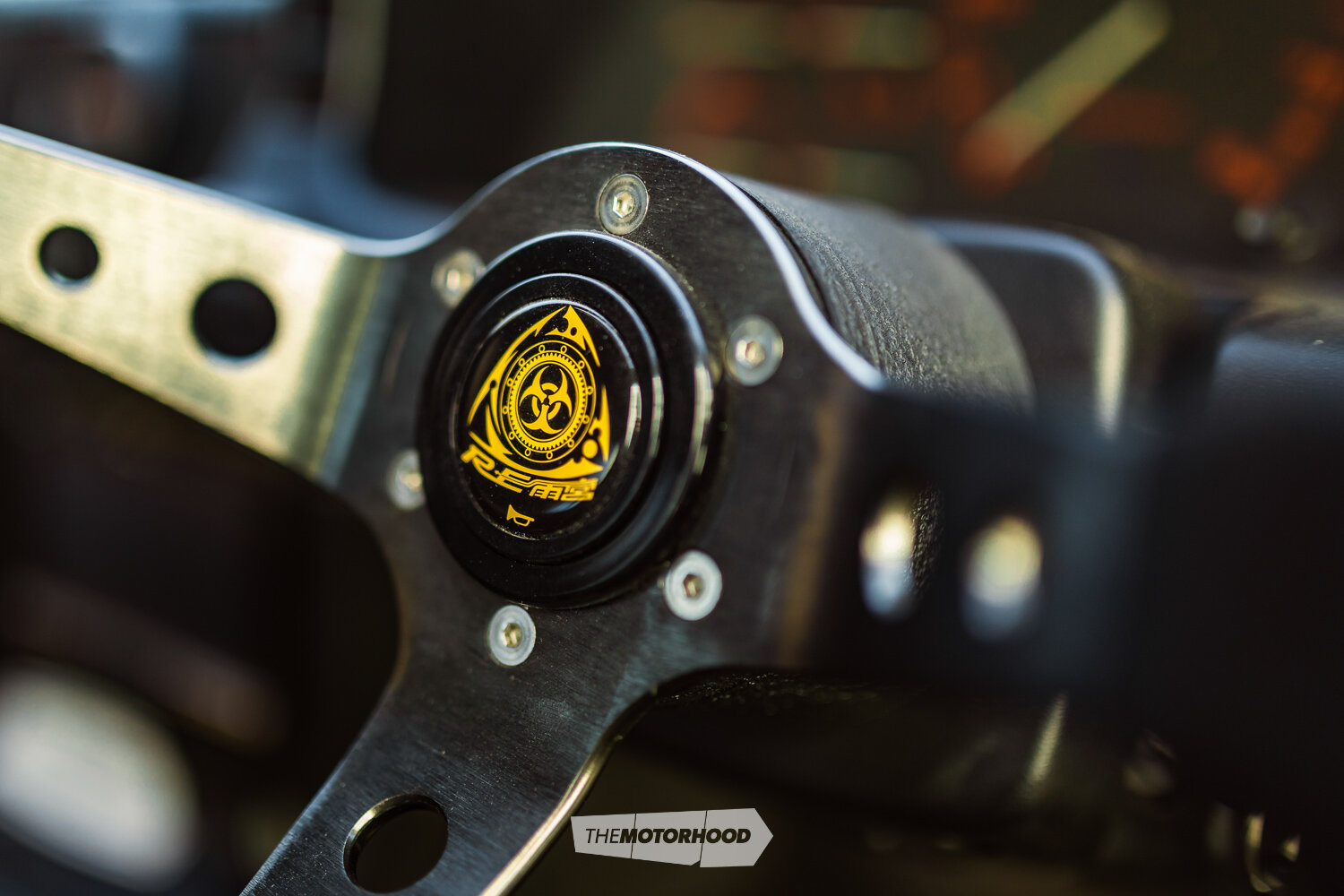
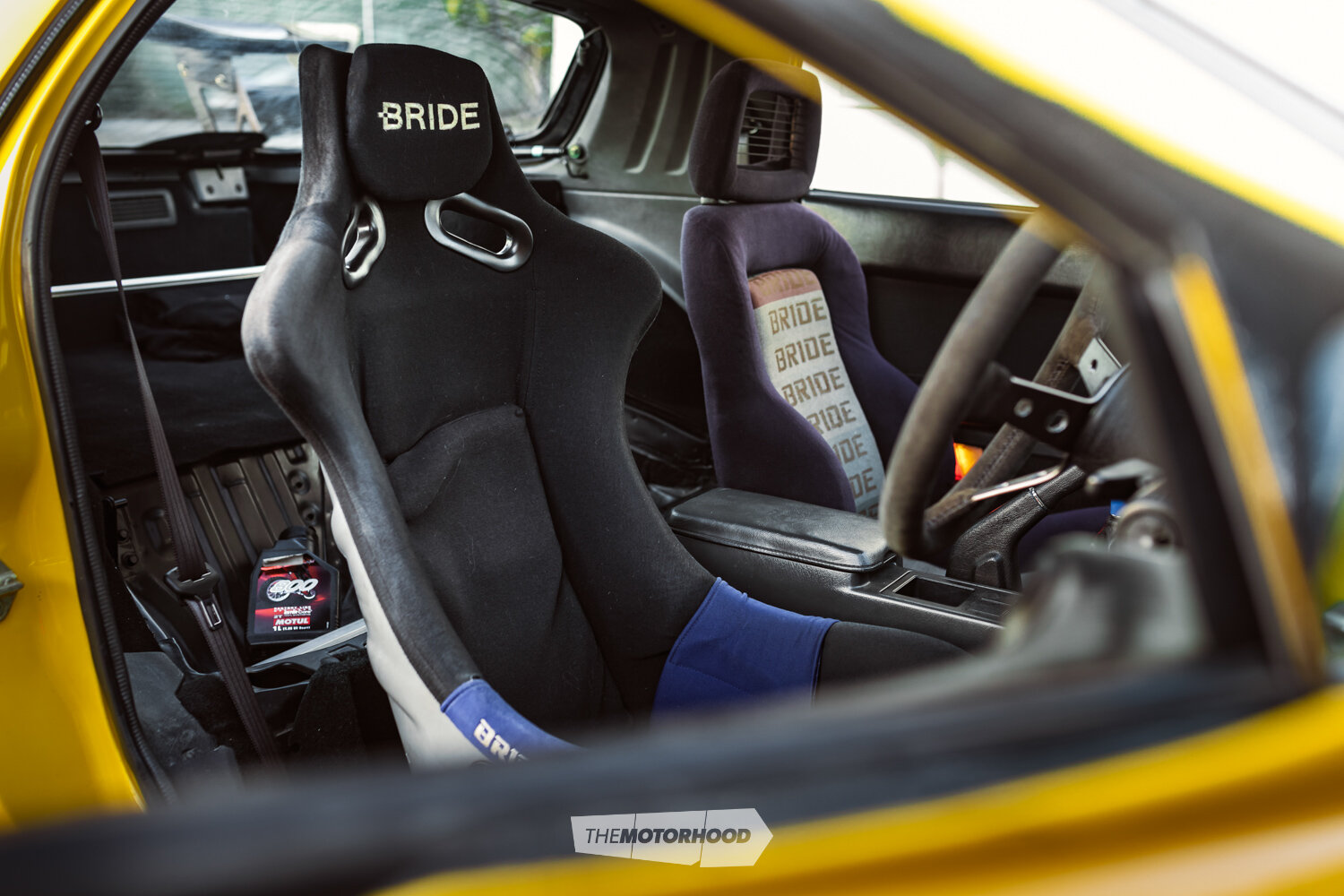
The RX-7 proved a pretty solid car on first inspection, a fresh import from Japan without so much as a compliance sheet to go by. Tony admits the prospect of buying an untested rotary felt a bit daunting, but the under-bonnet parts list made it tricky to pass up.
It’d never been leaned on since arriving, but the 13B turbo fired up, with a crisp pulse courtesy of some mystery port work. Supporting parts are akin to a pile of hens’ teeth, or rocking horse turds, you choose. A rare RE Amemiya auxiliary injection intake sits proud over the block, housing a pair of giant additional injectors. They’re controlled by a proper old-school GReddy Rebic I unit, dedicated solely to the additional fuel squirters and adjusted with a bunch of actual analogue knobs.
The Rebic I primarily ensures the AFRs are kept in check. Even back in the ’90s, Japan’s rotary guys were switched on to the potential for catastrophe when rotary fuel needs aren’t met. A chipped factory ECU does the rest, with a fuel cut defender thrown in for good measure. “It’s one of the many mysteries,” laughs Tony, “but it seems to work.”
It’s proper era-correct stuff, with a turbo devoid of markings that can only be described as ‘large’, feeding air through a legit GReddy front-mount cooler.
A visit for a compliance check revealed a few issues — like, a full three-page novel worth. Too much camber, horn that was MIA, and way too many decibels from it’s 3.5-inch exhaust, to name a few. On the whole, nothing particularly difficult. Even the dreaded paint match — a three-layer pearl — following some minor rust repairs was blended seamlessly by Platinum Refinishers in Hamilton.
“These old Japanese builds are all over the place,” Tony explains. “Some things are done to incredibly high standards, like the crazy relocation of the heater controls to the glovebox, with a nice custom loom and brackets. Then you find it’s got three wheel spacers on each side!” On the whole, though, the build is up to a high standard.
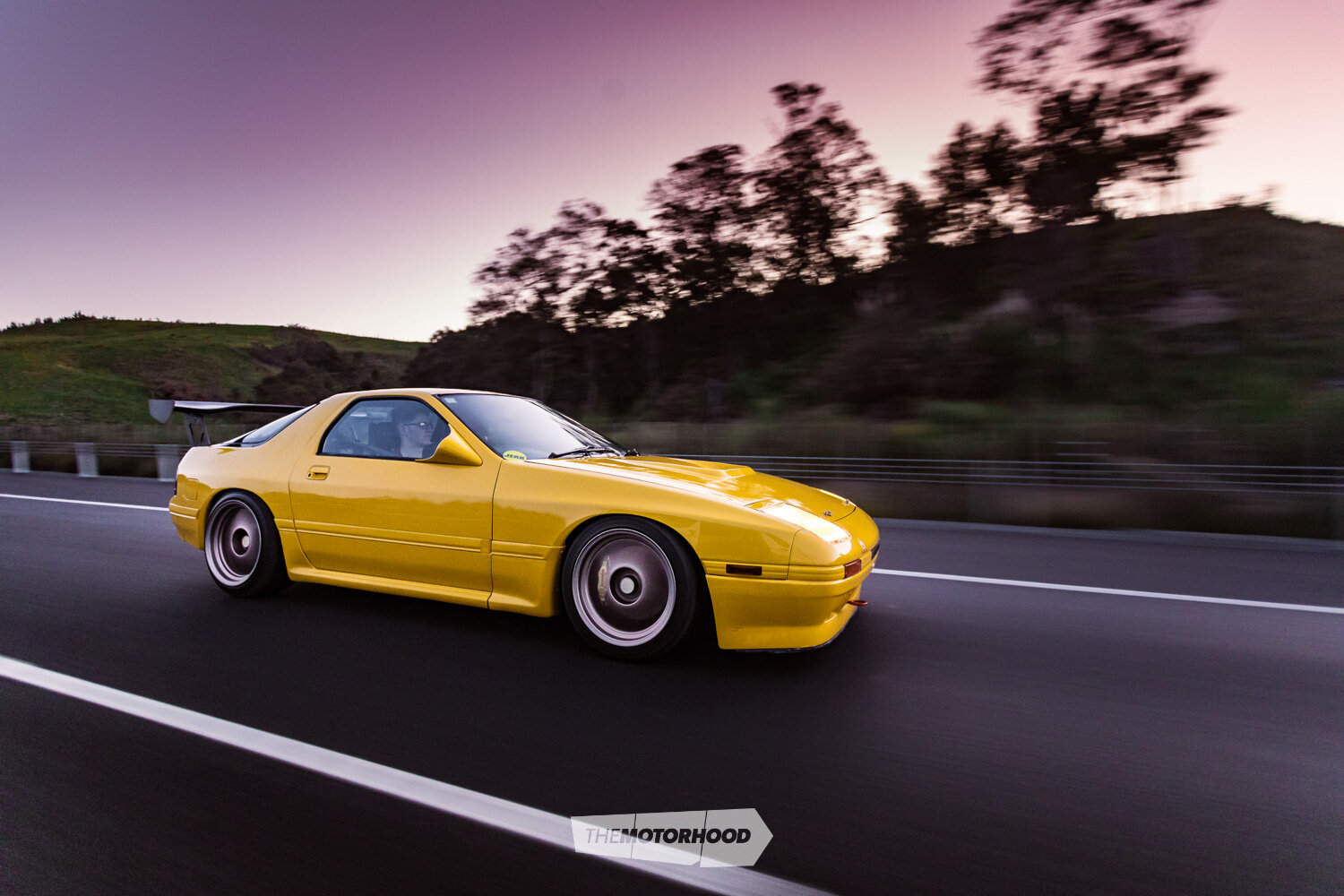
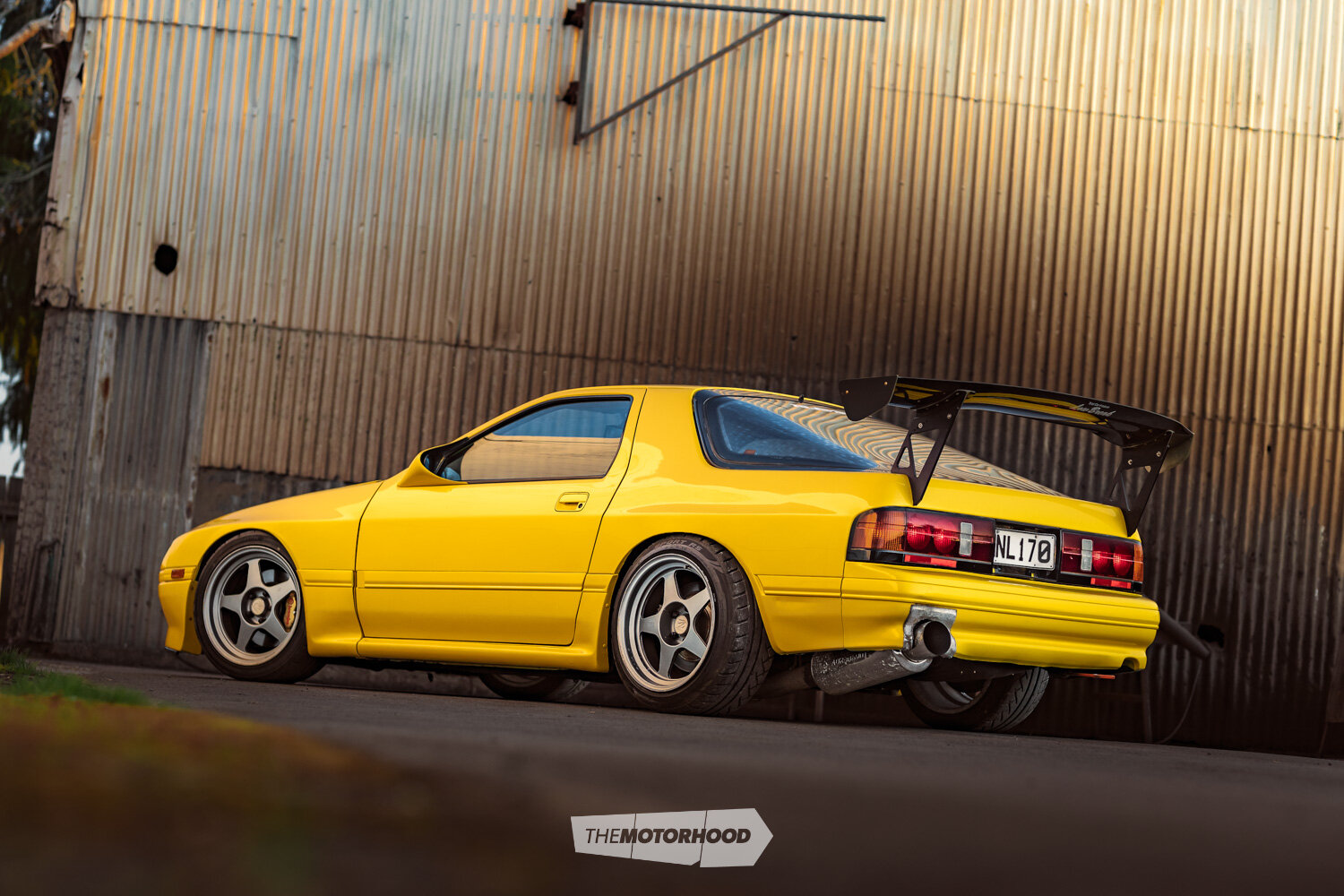
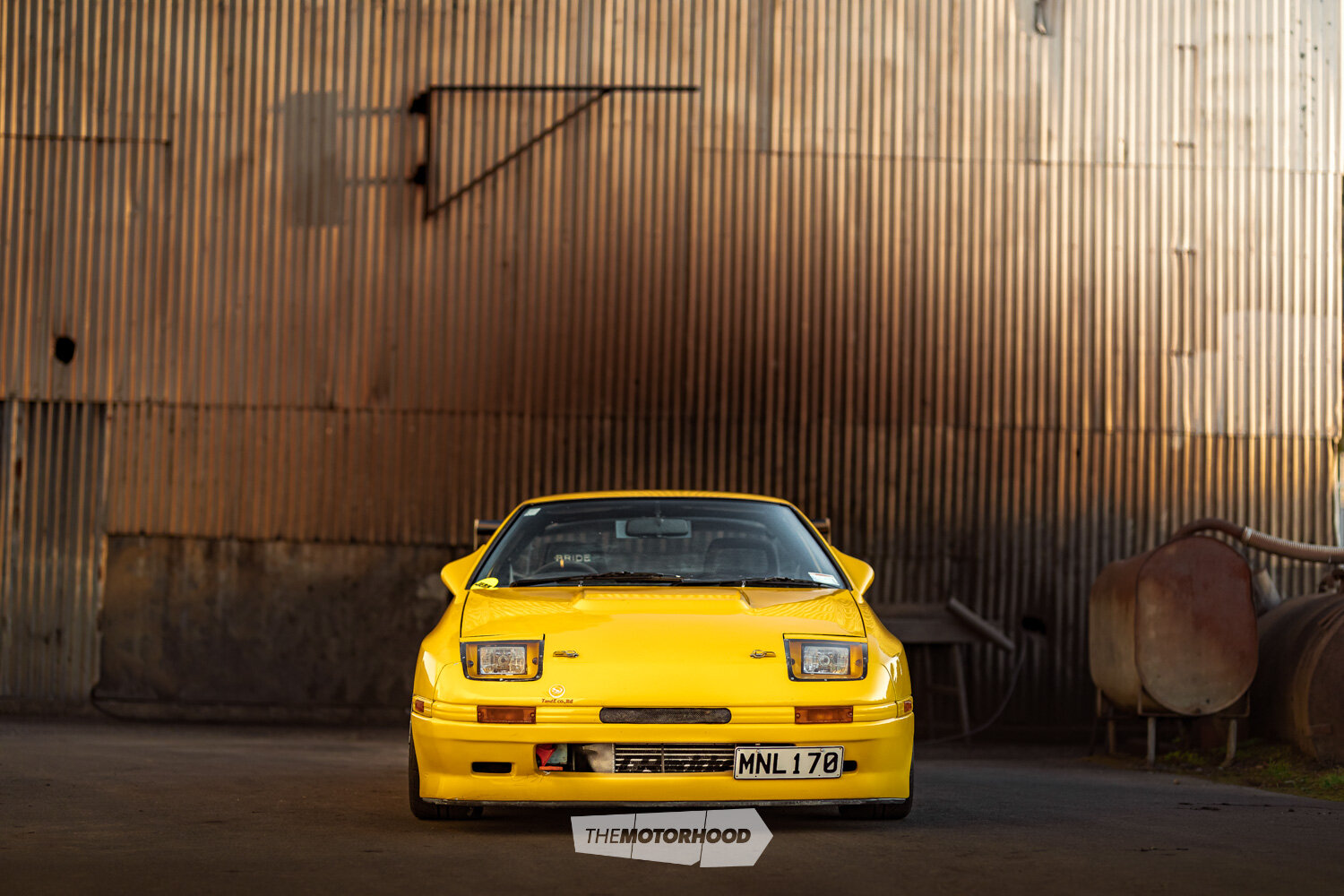
The RX-7 bears many hallmarks of an RE Amemiya build. The yellow is an ‘almost’ signature hue, augmented by the wing mirrors, fixed-headlamp kit, and bumper, all by RE Amemiya. A plaque appears on the glovebox, but to date it’s not confirmed. At some stage, when order is restored to the world, Tony intends to travel to Japan and do his best to find out, but not before getting in some seat time.
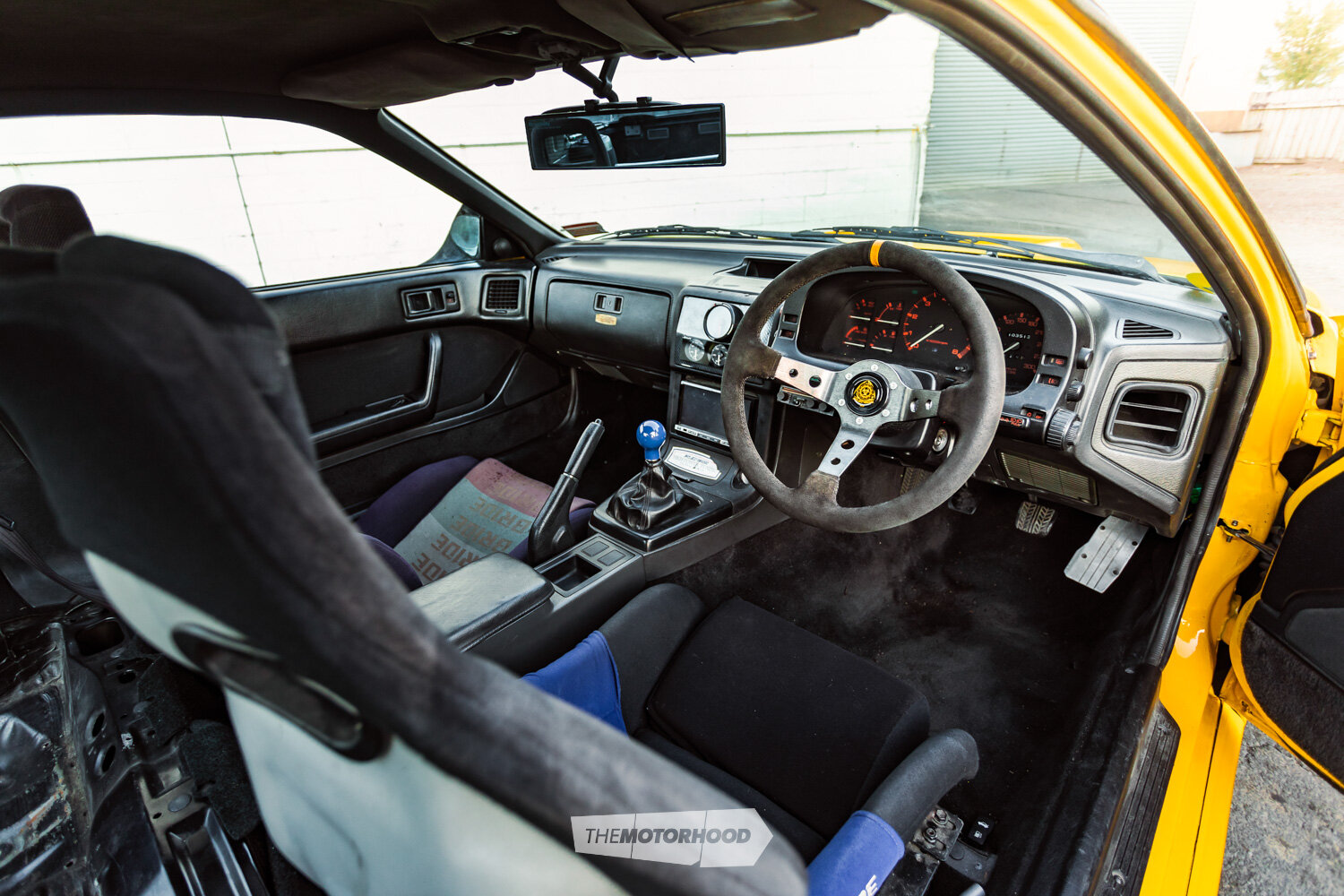
As mentioned, Tony was a bit apprehensive around the unknown condition of the 13B. Before getting on the loud pedal, the RX-7 was taken to Mark Haynes at HPR for a health check and dyno tune. The report back was no cause for concern. Compressions were solid, and with the help of the Rebic providing limited tuning ability, AFRs were kept safely in check, and the FC pumped out a useful 250kW to the treads on 9psi of boost.
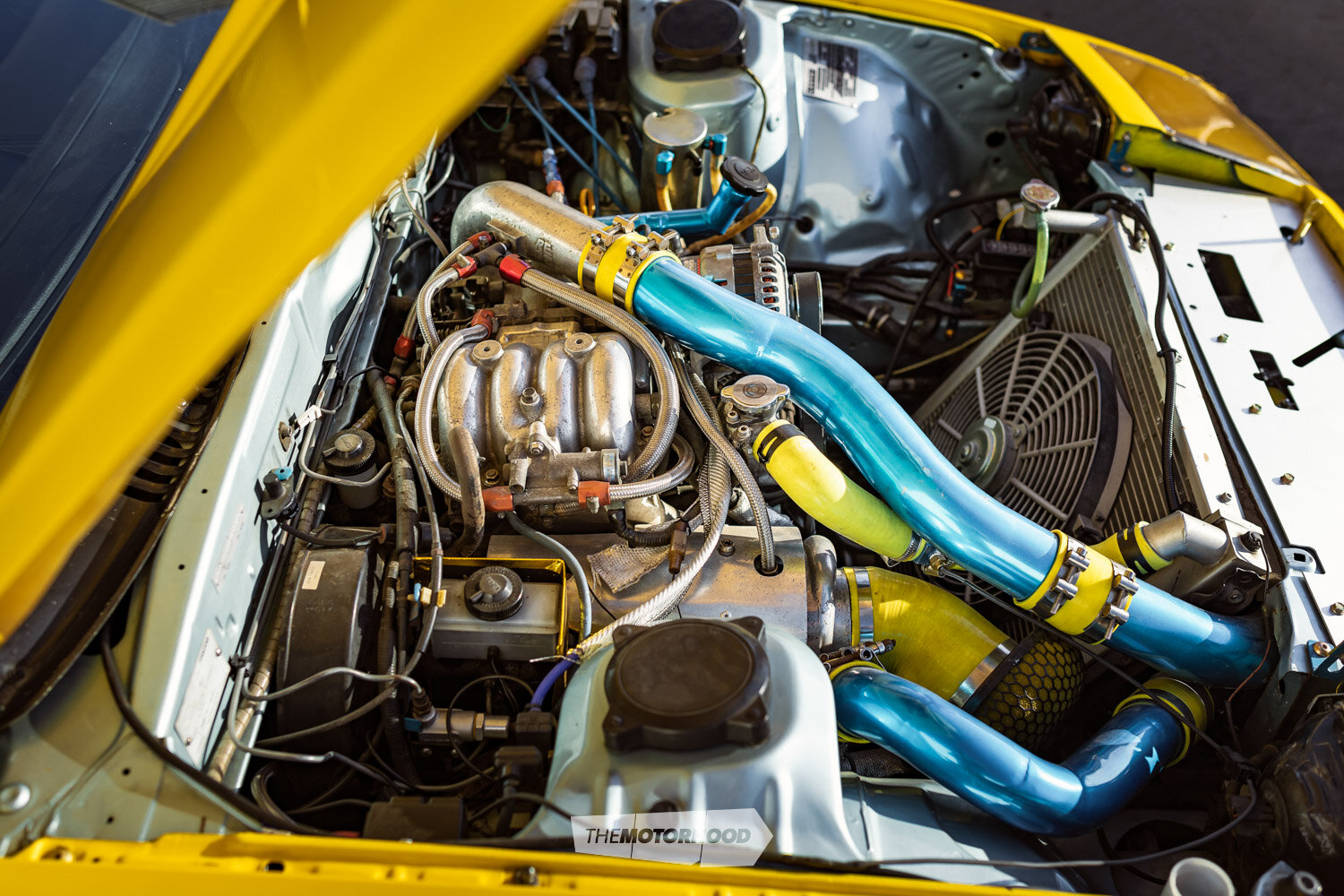
From the passenger seat, it’s all ’90s, from the noticeably laggy power delivery to the aggressive ported rotary howl as it pulls through the rev range on boost. “It took me a while to get used to having to rev it so hard, but once I did I understood why people love rotaries,” Tony smiles. “The power delivery is awesome — it just keeps on coming!” Not only did the unequivocal rotary power experience put a smile on his dial, but the tautness of the FC chassis, suspended on a combo of Knightsports and Mazdaspeed gear, also impressed. “It handles so much better than the GA61. My first real drive was at Manfeild, and I was really impressed with the grip,” he tells us.
So where to now for this piece of golden-era history?
Tony reckons that all he really wants to do is modernise the engine management, for peace of mind rather than chasing numbers. Otherwise the FC is going to remain as is, in all of its nostalgic glory.
It’s a reminder in bright yellow, of the genesis of proper Japanese car tuning. The pathways laid down by the grandmaster tuners of decades gone by, a flavour now sadly becoming extinct as Japan’s manufacturers drift away from the kind of enthusiast car that spawned a world-renowned culture. But with cars like this around, and a swathe of enthusiastic curators, history is in good hands. At the very least, the sound of a screaming 13B resonating through the Waikato hills will ensure it lives on.

This article originally appeared in NZ Performance Car issue No. 288





